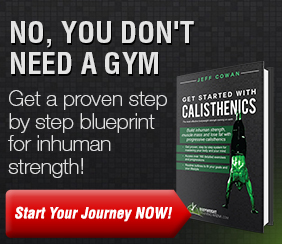Are tight, stiff shoulders holding you back from hitting your next fitness milestone? Whether pushing towards advanced calisthenics moves like the back lever or simply trying to improve shoulder health, a secret weapon can change the game—weighted shoulder dislocates.
This dynamic exercise isn’t just for the elite; it’s a must-have for anyone serious about building shoulder mobility, strength, and flexibility. Weighted shoulder dislocates target those tight spots, opening up a new level of performance and injury prevention.
This article explains the benefits of weighted shoulder dislocates, how to perform them properly, and how to add them to your routine to boost shoulder mobility and strength.
What Are Weighted Shoulder Dislocates?
First, let’s talk about what exactly we’re working with here. If you’ve done regular shoulder dislocates before, you probably know they involve a pvc pipe or a resistance band to stretch your shoulders. Now, imagine adding some weight to the mix—that’s when things get interesting.
Weighted shoulder dislocates go beyond stretching. They help you build controlled strength across the full range of your shoulder’s motion.
The idea is to not just passively stretch but actively work your muscles, creating a balance between flexibility and strength. It’s like upgrading from a regular shoulder stretch to a full-blown shoulder workout, and trust me, your shoulders will thank you for it!
Related article: Combining Calisthenics & Weight Training
Benefits of Doing Shoulder Dislocates
Now that you know the exercise, let’s break down the benefits—and there are plenty. These three reasons alone should make you want to try them out ASAP:
1. Mobility & Flexibility: Say Goodbye to Stiff Shoulders
We all know how frustrating stiff shoulders can be, especially when trying to progress in calisthenics. Weighted shoulder dislocates are like giving your shoulders a deep tissue massage while strengthening them simultaneously.
It’s about creating that smooth, controlled motion that allows you to flow from one move to another. Imagine how much easier it would be to hit advanced moves like the back lever or muscle-ups if your shoulders had the flexibility of a gymnast!
Consider it this way: mobility is the key ingredient that enables impressive, high-level movements. Weighted shoulder dislocates are the added element that enhances and refines mobility.
2. Strength Gains: Make Other Moves Feel Like a Breeze
Let’s be real—mobility is great, but we also want strength, right? The beauty of weighted shoulder dislocates is that they don’t just stretch your shoulders; they make them stronger.
By adding weight, you’re challenging your shoulder girdle to move through its full range with control and power. This exercise builds the deep stabilizing muscles that keep your shoulders strong and resilient.
And here’s the cool part: Other exercises become easier when your shoulders are strong and mobile. That extra strength makes moves like pull-ups, handstands, and planches much more achievable.
3. Injury Prevention: Strong Shoulders, Fewer Injuries
Nobody likes being sidelined by injuries, especially when it’s something as annoying as a shoulder tweak. Doing weighted shoulder dislocates improves your mobility and strength and gives your shoulders the protection they need.
The stronger and more flexible your shoulders are, the less likely they are to get injured. You’ll be able to push harder in your workouts without worrying about overstraining or damaging your shoulders.
So, if injury prevention is part of your fitness plan (and it should be), weighted shoulder dislocates are an absolute must.
How to Perform Weighted Shoulder Dislocates Properly
Alright, now that you’re pumped about the benefits, let’s discuss how to do this exercise correctly. It’s super important to nail the form here to reap all the rewards without risking injury.
- Grab a weight: Start with something light—like a 2 to 5 kg bar or a small weight plate.
- Hold the weight with both hands: Keep your arms wider than shoulder-width apart, and grip the weight securely.
- Begin the movement: Start with the weight in front of you at waist level. Slowly and with control, lift it overhead, keeping your arms straight. Once the weight is overhead, continue the movement until it’s behind your back, then return to the starting position.
- Keep it controlled: This isn’t a race. Move slowly and focus on feeling the stretch and engagement in your shoulders.
Pro tip: If you feel any sharp pain, stop immediately. You want a challenging stretch, but it should never be painful.


